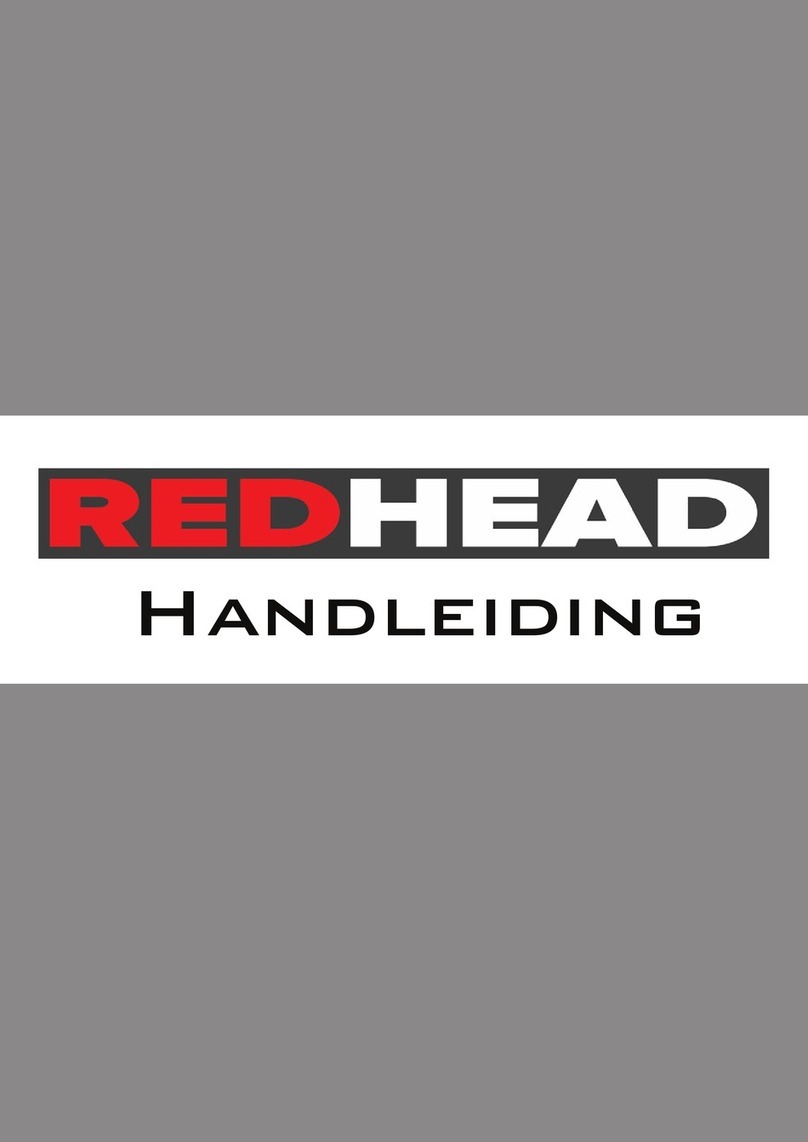
2 Special references
2.1 Instructions
The following standard is applicable to fastener driving tools; EN792-13:2000‖Hand-held non-electric power tools-safety
requirements –Part 13: Fastener driving tools‖.
This standard requires that
-Only those fasteners which are specified in the operating instructions (see TECHNICAL DATA) shall be used in
fastener driving tools. The fastener driving tool and the fasteners specified in the operating instructions are to be
considered as one unit safety system;
-quick action couplings shall be used for connection to the compressed air system and the non-sealable nipple
must be fitted at the tool in such a way that no compressed air remains in the tool after disconnection;
-oxygen or combustible gases shall not be used as an energy source for compressed air operated fastener driving
tools;
-fastener driving tools shall only be connected to an air-supply where the maximum allowable pressure of the tool
cannot be exceeded by more than 10%;in the case of higher pressure ,a pressure reducing valve which includes a
downstream safety valve shall be built into the compressed air supply;
-only spare parts specified by the manufacturer or his authorized representative shall be used in the repair of
fastener driving tools;
-repairs shall be carried out only by the manufacturers authorized agents or by other experts, having due regard to
the information given in the operating instructions.
-stands for mounting the fastener driving tools to a support, for example to a work table, shall be designed and
constructed by the stand manufacturer in such a way that the fastener driving tools can be safely fixed for the
intended use, thus for example avoiding damage, distortion, displacement.
Special fields of application for the fastener driving tool may require the observance of additional provisions and
regulations.
-only the main energy and lubricants listed in the operating instructions may be used:
-fastener driving tools marked with an inverted equilateral triangle standing on one point may only be used with an
effective safety yoke;
-for the maintenance of fastener driving tools, only spare parts specified by the manufacturer or his authorized
representative shall be used;
-repairs shall be carried out only by agents authorized by the manufacturer or by other specialists, having due
regard to the information given in the operating instructions;
-NOTE: Specialists are those who, as a result by professional training or experience, have sufficient expertise
in the field of fastener driving tools and sufficient familiarity with relevant govemmental industrial protection
provisions, accident prevention regulations, directives and generally recognized technical
regulations(e.g.CEN-and CENELEC-standards),to be able to assess the safe working condition of fastener driving
tools.
2.2 Noise emission
The characteristic noise values for the fastener driving tool have been determined in accordance with EN12549:1999 and
EN ISO4871‖Acoustics-Noise test code for fastener driving tools-Engineering method‖(see Technical Data).
These values are tool-related characteristic values and do not represent the noise development at the point of use. Noise
development at the point of use will for example depend on the working environment, the work piece, the work piece
support and the number of driving operations, etc.
Depending in the conditions at the workplace and the form of the workplace, individual noise attenuation measures may
need to be carried out, such as placing work pieces on sound-damping supports, preventing work piece vibration by
means of clamping or covering, adjusting to the minimum air pressure required for the operation involved, etc,
In special cases it is necessary to wear hearing protection equipment.




























